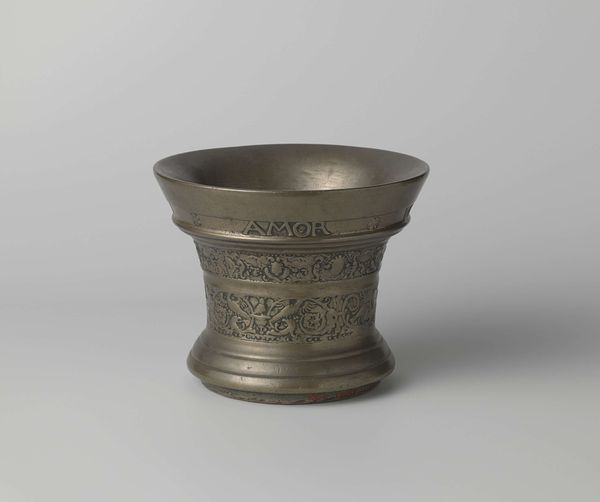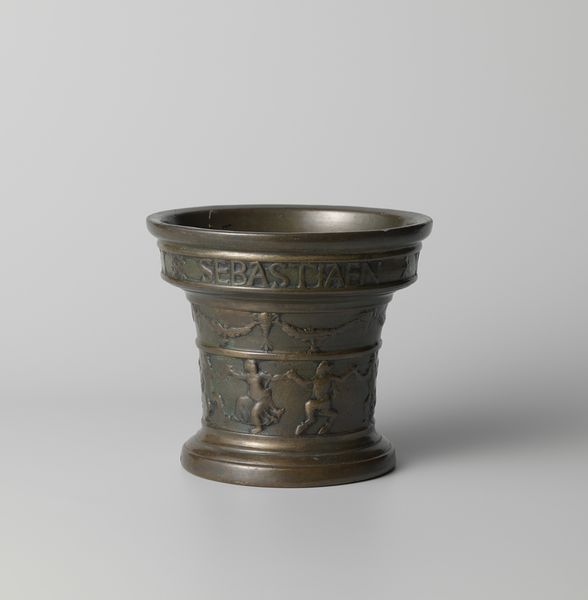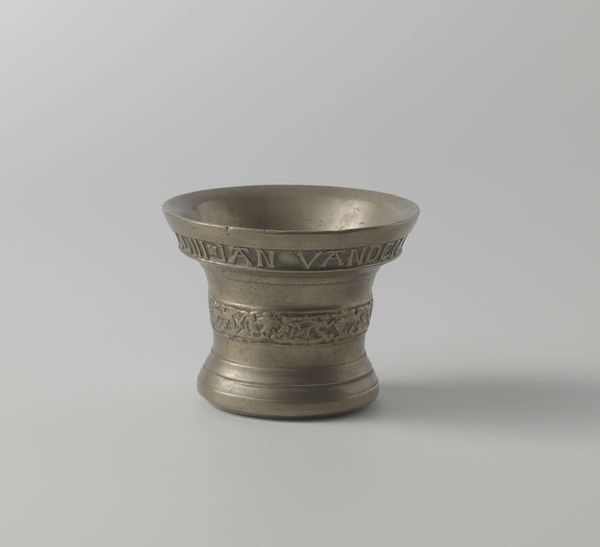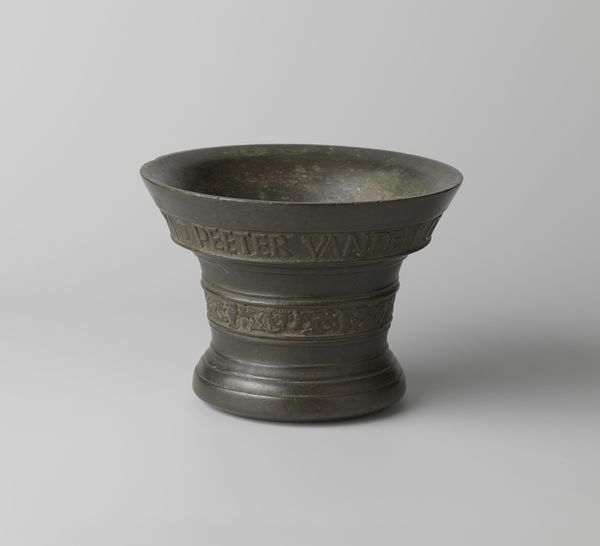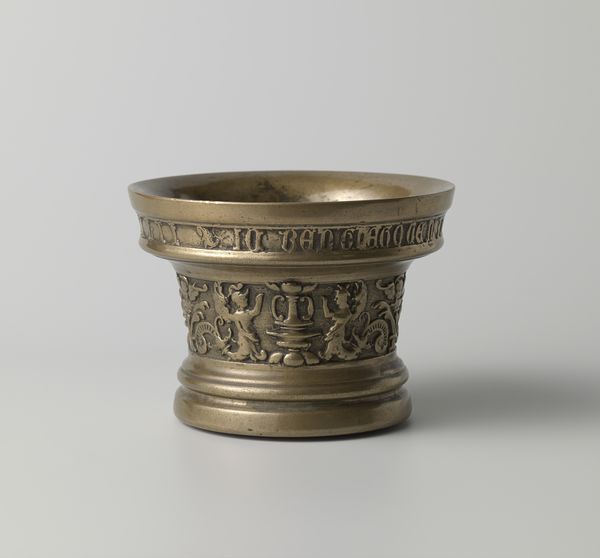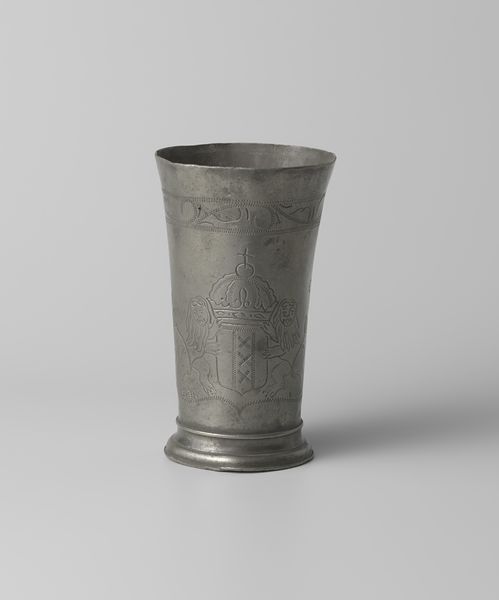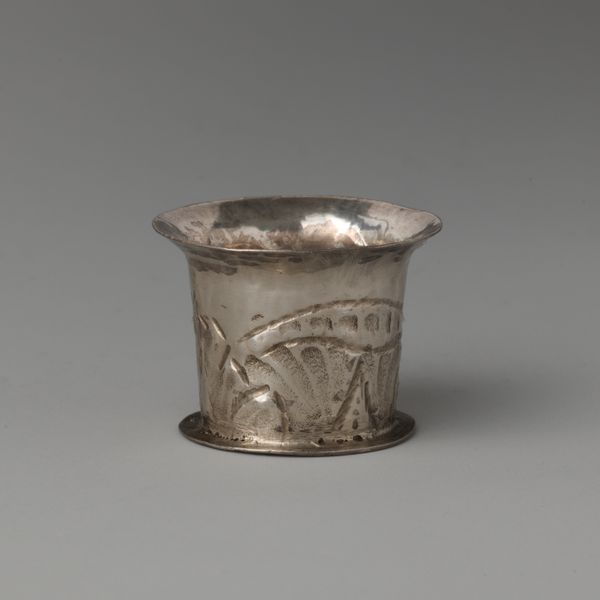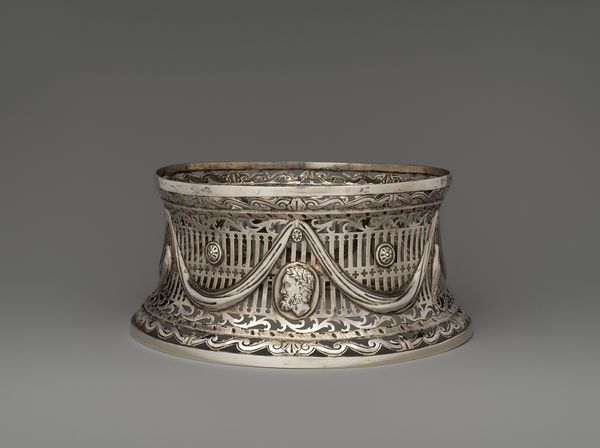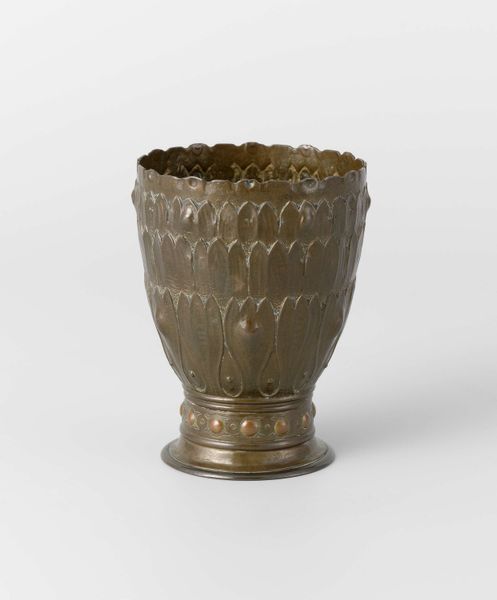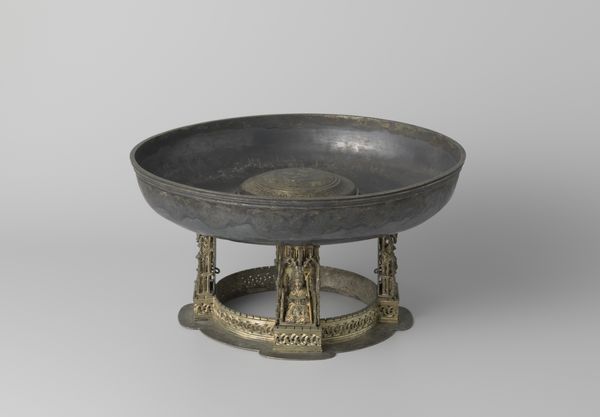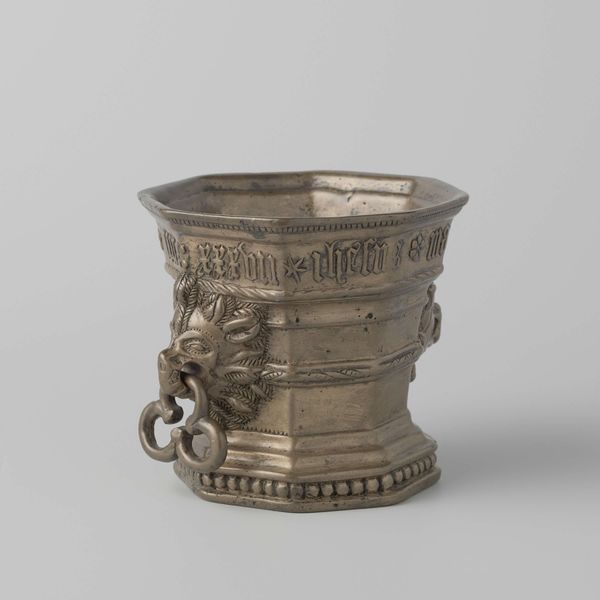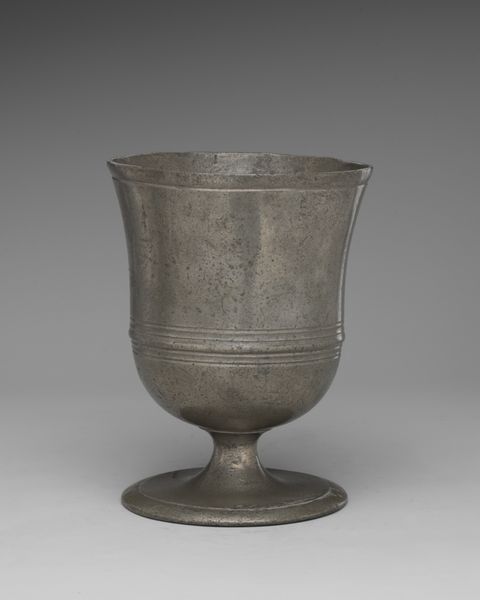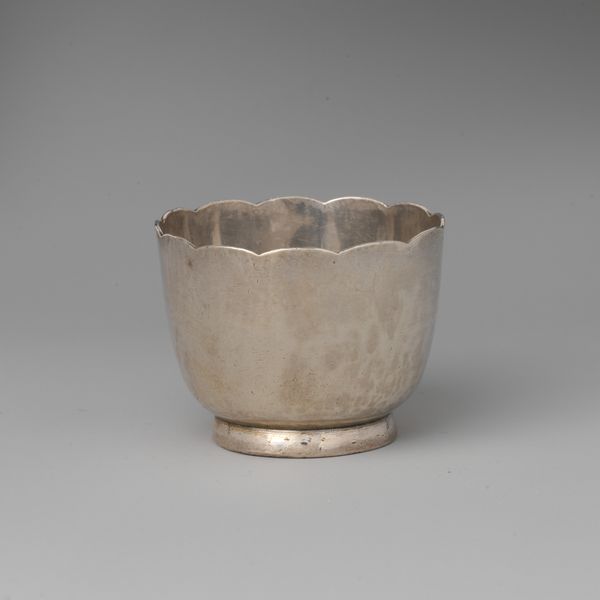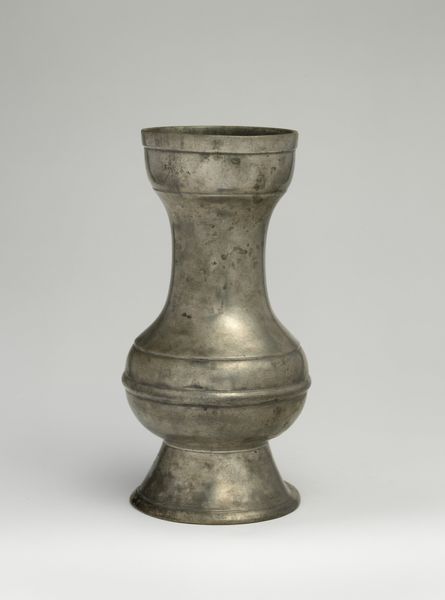
metal, bronze
#
baroque
#
metal
#
bronze
#
stoneware
#
ceramic
Dimensions: height 19.2 cm, diameter 24.0 cm, weight 16.6 kg
Copyright: Rijks Museum: Open Domain
Editor: This is Cornelis Ouderogge’s “Mortar and Pestle,” created in 1637 from bronze. It’s much more ornate than I expected. So, what strikes you most about this object? Curator: Immediately, I’m drawn to the labor invested in this bronze mortar. The Baroque period was very interesting since there was such contrast with highly decorated craft items used for mundane activities. Who would have made it, and what did making this signify? It suggests a negotiation between functionality, status, and the symbolic weight of bronze as a material. Editor: Status? Because it's not exactly something you would see being used everyday right? Curator: Precisely! The "Soli Deo Gloria" inscription transforms it beyond a mere kitchen tool. Consider the mold-making process, the foundry work, the chasing and engraving... these processes speak to workshops, skills passed down through generations. Was it commissioned? For whom? These objects give material clues to understand economic systems, societal aspirations, religious convictions, and a lot more of early modern Europe. It transcends “decoration”, speaking to broader power structures. Editor: So, you’re focusing less on artistic expression and more on production. The materials and labour reveal larger social trends? Curator: Exactly. I view it through materiality. Its significance resides less in aesthetics, and more in revealing systems of production, commerce, and its use as a raw material, of bronze shaping early modern society. I bet we could locate where that bronze was mined! Editor: It makes you see the artwork very differently. Now, I wonder who actually used it and for what purpose. Thank you for your insights! Curator: My pleasure. Material analysis really opens up fascinating research pathways into pasts, doesn't it?
Comments
rijksmuseum about 2 years ago
⋮
This mortar is adorned with two friezes. The top one consists of stylized flowers, while the bottom one features flowers, foliage motifs, and birds with spread wings. Inscribed in Latin along the top edge is: ‘By the grace of God, Ouderogge made this in 1637.’ The mortar was cast by either Cornelis or his brother Dirk. They also made bells and cannons.
Join the conversation
Join millions of artists and users on Artera today and experience the ultimate creative platform.
